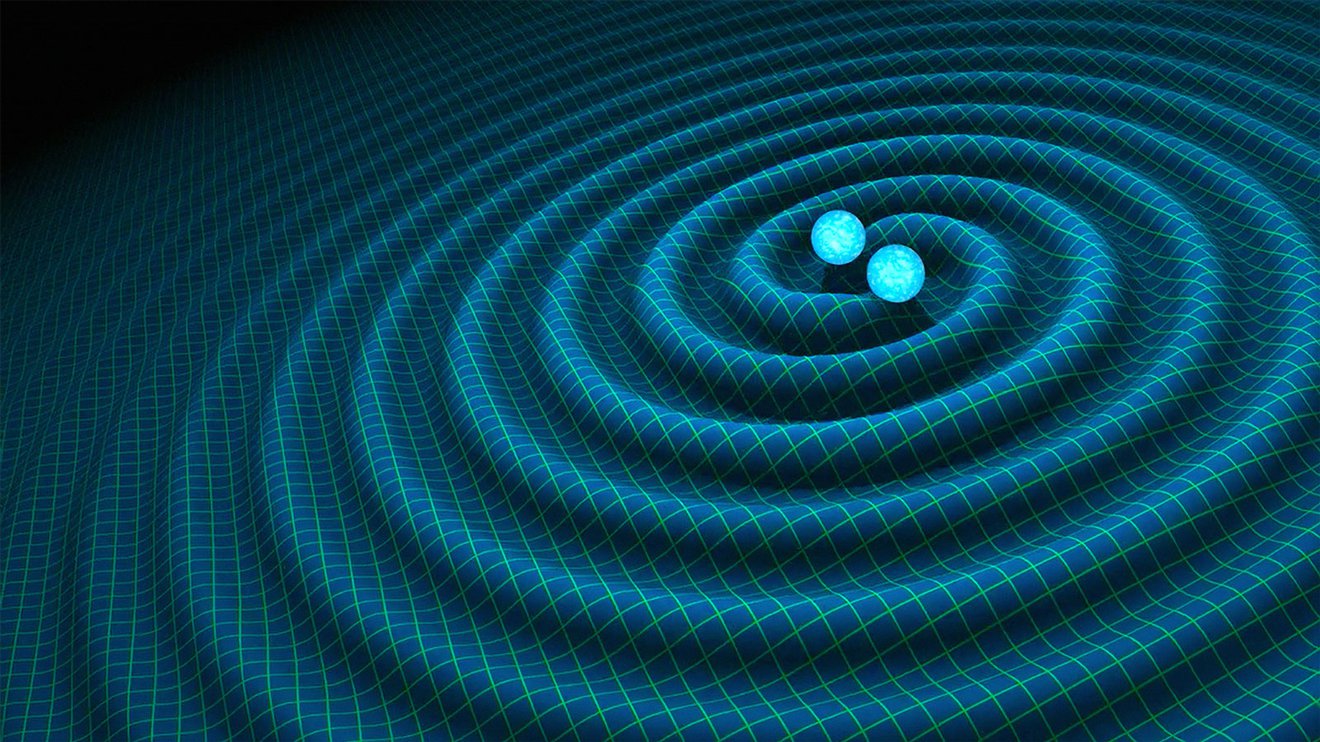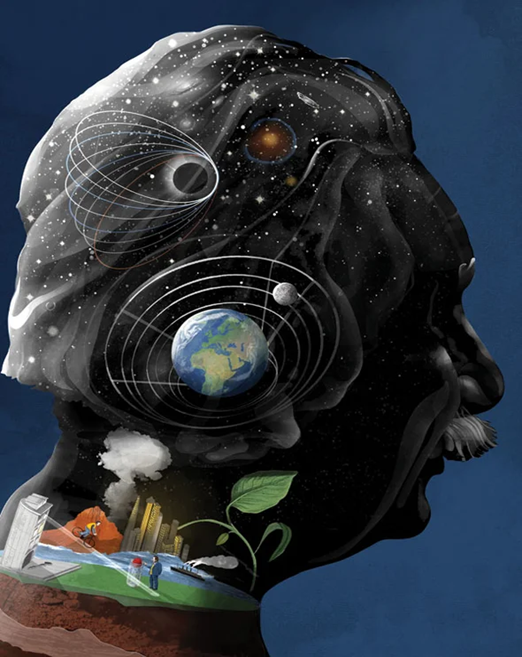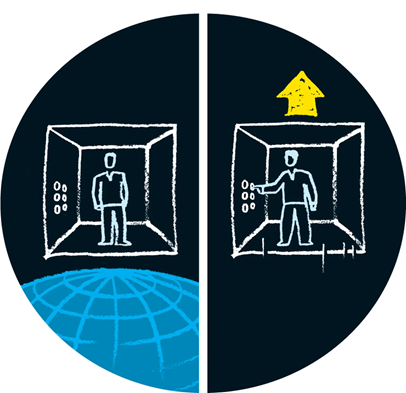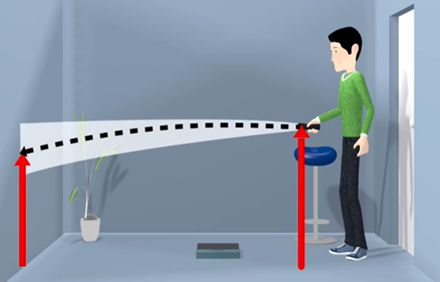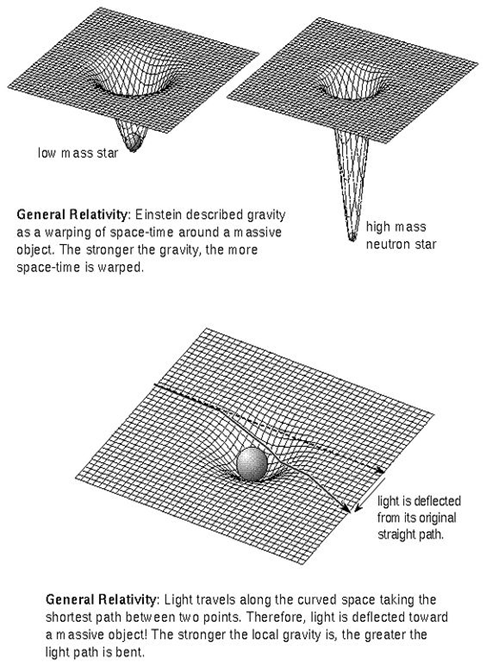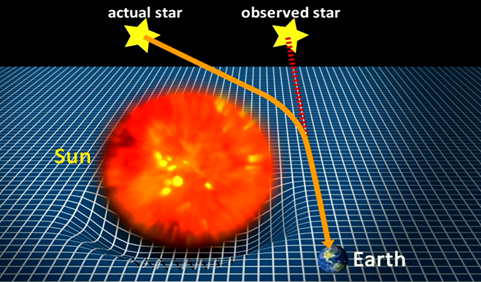Gravitational Waves, Black Holes, and the Expanding Universe: The Cosmos Unfolded by General Relativity
Saanjh Balpande • 2024-07-17
Gedankenexperiment, German for "thought experiment," was Albert Einstein's famous name for his imaginings that led to his most significant physics breakthroughs.
He envisioned a world in which gravity is more than just a force of attraction, but a curvature in the very fabric of the universe. He imagined a journey in which time warps and stretches, and massive celestial bodies direct the path of light and motion. Einstein developed new theories about the natural world by using his imagination to go beyond the constraints of laboratory measurements.
General relativity is a theory of gravity developed by Albert Einstein in 1915. It is one of the two pillars of modern physics, along with quantum mechanics. General relativity is a geometric theory of gravity, which means that it describes gravity as a curvature of spacetime. This curvature is caused by the presence of mass and energy.
In order to understand the concept of general relativity, we need to first understand gravity. In the 17th century, Isaac Newton formulated a theory of gravity to elucidate the reasons behind objects falling to the ground and the planetary orbits around the Sun. This theory, known as Newtonian gravity, posits gravity as a force acting between two objects. The gravitational force is directly proportional to the product of the masses of the two objects and inversely proportional to the square of the distance between them.
Newtonian gravity has been a remarkably successful theory, offering explanations for various phenomena such as planetary motion, tides, and the formation of celestial bodies. Nonetheless, it encountered certain unresolved issues.
In contemplating the experience of falling, Einstein visualized gravity as the dominant force at play. In a free fall, he realized that an individual would experience weightlessness, similar to being in space, as there would be no opposing force from the ground. He recognized that gravity and acceleration could be viewed as two aspects of the same phenomenon, with the concept of acceleration being pivotal in relating gravity to the theory of relativity, forming the basis of general relativity.
Einstein's hypothetical scenario involved a person inside a windowless room with a bathroom scale indicating a weight of 80 kilograms. He then explored the effects of placing the room on a spaceship accelerating upwards at 9.8 m/s^2. Remarkably, the person within the room would perceive the same weight, with no observable distinction.
Expanding on his thought experiment, Einstein envisaged employing a flashlight to project light from one end of the room to the other while the spaceship ascended. His work represents a deep exploration of the relationship between gravity, acceleration, and the effects of relative motion.
Einstein realized that due to the upward acceleration of the floor as the light traversed the room, the light beam would appear to curve downward. As a result, measuring the height on the wall would yield a lesser value than the actual height of the light source. Einstein then extended this scenario to measuring heights in a room on Earth and concluded that if light were to travel in a straight line from one end to the other, it would violate the principle of equidistance.
Einstein profoundly contemplated the principle of equivalence, positing that the effects of acceleration in space should be indistinguishable from the influence of gravity on Earth. Contemplating this, he inferred that light would bend in the presence of a gravitational field, challenging the conventional assumption of its straight-line trajectory. This realization led to the conclusion that the shortest path for light between two points is curved in the vicinity of gravity. Per Einstein's theory of general relativity, gravity is not a force but rather a consequence of spacetime curvature engendered by mass and energy. Substantial objects interact with this curvature, causing them to move along curved paths.
According to Albert Einstein’s theory of general relativity, gravity is not a force. Instead, it is a curvature of spacetime caused by mass and energy. Massive objects bend space time. The more massive an object is, the more it bends spacetime. Objects follow geodesics, which are the shortest paths through spacetime. When an object moves through curved spacetime, it appears attracted to other massive objects. This is what we experience as gravity.
In classical Newtonian physics, time is considered an absolute and uniform quantity that progresses independently throughout the universe. However, according to Einstein's theory of relativity, time is not absolute but is relative and can be influenced by an observer's motion and the effects of gravity.
This means that the rate at which time passes can vary depending on where you are in the universe and how fast you are moving relative to the speed of light. For example, time passes slower for objects that are closer to massive objects, such as stars and black holes. This is because the curvature of spacetime is stronger near massive objects, and this curvature affects the rate at which time passes. General relativity also predicts that time passes slower for objects that are moving faster. This is known as time dilation. Time dilation has been experimentally verified, and it is one of the most famous predictions of general relativity.
It's easy to think there's a phenomenon called time dilation: what causes it? What happens is that different observers will disagree about what constitutes space and what constitutes time and time dilation is just part of a bigger phenomenon.
As I sit here at my keyboard I'm not moving in space, but I am moving in time. So for some activity (e.g. from the start to the end of my typing this sentence) my Δx=0 and my Δt=T for some time T.
However the bug-eyed alien that has just zoomed past at 0.9c disagrees. The alien, seated at their typewriter, sees me moving at −0.9c, so in between starting and finishing my sentence the alien sees that I have moved some distance Δx=d. But in SR space and time are linked, so if the alien measures a different Δx they must also measure a different Δt. The two are linked by the relationship
c2Δt2−Δx2=c2Δt′2−Δx′2
where the unprimed t and x are what I measure and the primed t′ and x′ are what the alien measures. Even without doing the maths, it should be obvious that because Δx<Δx′ it follows that Δt<Δt′. In other words when the alien times how long it takes me to type the sentence they measure a longer time than I do. For the alien, my time has been dilated.
At the time, when Albert Einstein published his theory, he was absolutely ridiculed and criticised for his theory. People thought it was too weird, and radical.
It was 4 years later, that a physicist, Arthur Eddington observed that the light from a star that was passing close to the Sun was bent by an amount that was twice what was predicted by Newtonian gravity. This observation was a confirmation of general relativity.
General relativity is a theory that is compatible with both special relativity and Newtonian gravity. It is a more complete and accurate theory of gravity than Newtonian gravity.
General relativity has had a profound impact on our understanding of the universe. It has led to the discovery of new phenomena, such as black holes and gravitational waves. It has also helped us to understand the early universe and the evolution of the universe. General relativity has revolutionized the field of astronomy. It has allowed us to make new observations of the universe and to develop new theories about how the universe works.
One of the most important changes that general relativity has made to astronomy is the way that we understand black holes. Black holes are regions of spacetime where the curvature of spacetime is so strong that nothing, not even light, can escape. They were first predicted by general relativity in 1916, and they have since been observed in a number of different ways.
General relativity has also helped us to understand the evolution of the universe. The Big Bang is the theory that our universe began as a hot, dense point about 13.8 billion years ago. Since then, the universe has been expanding and cooling. General relativity has allowed us to understand the details of this expansion and cooling.
We've gotten pretty deep into the theory at this point. Sure, we may never know the answers to these questions about the universe. However, because the insights of Einstein’s theory could lead to a better understanding of the nature of space and time, these questions are some of the most active areas of research in theoretical physics. And it all comes back from Einstein's Gedankenexperiment.
Referenced from the book - relativity - the special and the general theory
See More Posts
Copyright © 2021 Govest, Inc. All rights reserved.
